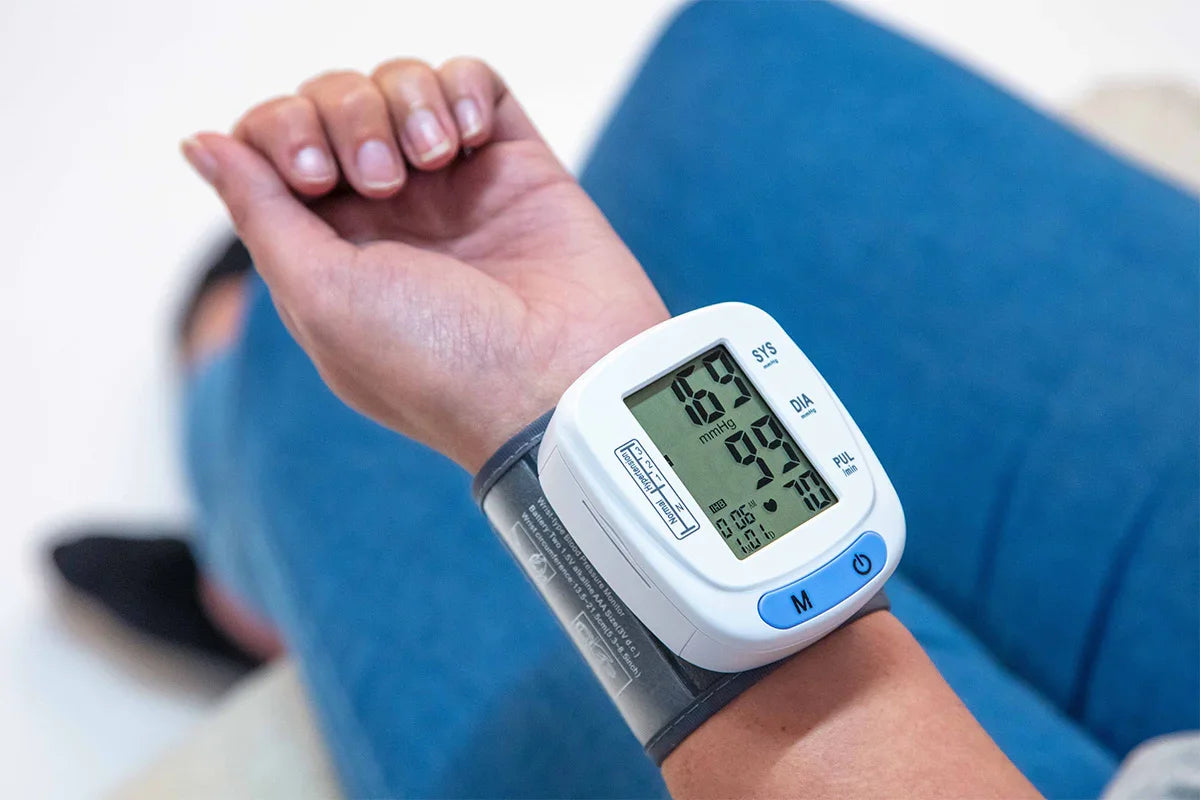Visiting the doctor to monitor your blood pressure can be very hectic. One can save a lot of hassle and time by checking the numbers at home. Wrist blood monitors let you know your blood pressure at home. In fact, you can monitor your blood pressure by taking readings whenever you want. Wrist blood pressure monitors can help to give a better understanding of your blood pressure with multiple readings.
If you are suggested one such monitor by your healthcare provider, you might have a few questions. Let's aid you in making your decision.
What is a wrist blood pressure monitor?
A wrist blood pressure monitor is a type of blood pressure monitor worn on the wrist. Doctors usually recommend it when the upper arm monitors are painful to wear. It enables us to track the reading at home and share it with healthcare providers.
How does a wrist blood pressure unit work?
A wrist blood pressure unit measures systolic and diastolic pressure. Systolic pressure reading shows at the top. This pressure denotes when your heart beats and pumps blood to the organs. When the heart relaxes, the pressure at that time exhibits a diastolic pressure reading.
The functioning of wrist monitors is similar to that of other monitors. A cuff inflates like the upper arm monitors and blocks the blood flow. After this, the cuff deflates to reach systolic pressure. When the blood flow resumes, the wristband monitor detects the vibrations. These vibrations die when the diastolic pressure is achieved.
When to Choose Wrist Blood Pressure Monitor
It's best to ask your healthcare provider about the right blood pressure monitor. Your doctor may want you to take readings at home. If you can't wear the arm monitors due to certain medical conditions or due to poor fitting, wrist monitors come in handy.
How to Take Readings Using Wrist Blood Pressure Monitors
Even though wrist blood pressure monitors are considered not so accurate, they can deliver better results if used correctly.
First of all, choose the arm to use for measuring. Then, sit comfortably in a chair and place your elbow on the table. Next, place your wrist on your chest and bring it to the same level as your heart. Avoid holding up your wrist. Ask your healthcare providers to assist with the correct form during the readings.
Pros and Cons of Wrist Blood Pressure Monitors
Pros:
- Lightweight and hence easy to carry
- Comfortable to wear
- Helps to track the blood pressure throughout the day
- Provides an elaborate look at blood pressure
Cons:
- Aren't as accurate as arm blood pressure monitors
- Readings depend on the position of the wrist
Conclusion
Wrist blood pressure monitors can give an insight into the blood pressure profile. One can wear them at home or at work. Plus, there are many types of wrist monitors available. But first, talk to your doctor before opting for one.
If you are looking to get a reliable wrist monitor, then we can help you with our latest models. Allcarestore is a one-stop solution to cater all your medical gadgets and supplies.





